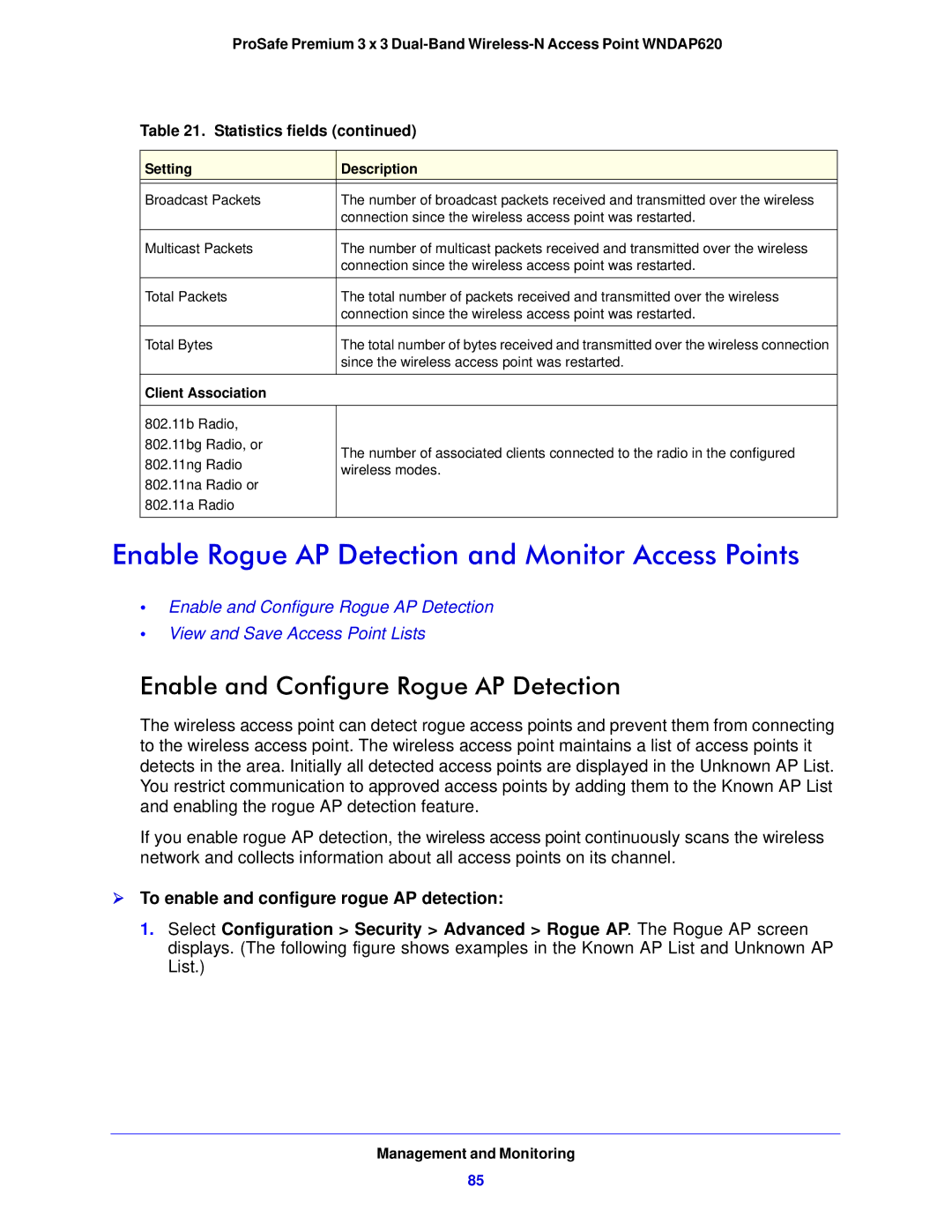ProSafe Premium 3 x 3
Table 21. Statistics fields (continued)
Setting | Description | |
|
| |
Broadcast Packets | The number of broadcast packets received and transmitted over the wireless | |
| connection since the wireless access point was restarted. | |
Multicast Packets | The number of multicast packets received and transmitted over the wireless | |
| connection since the wireless access point was restarted. | |
|
| |
Total Packets | The total number of packets received and transmitted over the wireless | |
| connection since the wireless access point was restarted. | |
|
| |
Total Bytes | The total number of bytes received and transmitted over the wireless connection | |
| since the wireless access point was restarted. | |
Client Association |
| |
|
| |
802.11b Radio, |
| |
802.11bg Radio, or | The number of associated clients connected to the radio in the configured | |
802.11ng Radio | ||
wireless modes. | ||
802.11na Radio or | ||
| ||
802.11a Radio |
| |
|
|
Enable Rogue AP Detection and Monitor Access Points
•Enable and Configure Rogue AP Detection
•View and Save Access Point Lists
Enable and Configure Rogue AP Detection
The wireless access point can detect rogue access points and prevent them from connecting to the wireless access point. The wireless access point maintains a list of access points it detects in the area. Initially all detected access points are displayed in the Unknown AP List. You restrict communication to approved access points by adding them to the Known AP List and enabling the rogue AP detection feature.
If you enable rogue AP detection, the wireless access point continuously scans the wireless network and collects information about all access points on its channel.
To enable and configure rogue AP detection:
1.Select Configuration > Security > Advanced > Rogue AP. The Rogue AP screen displays. (The following figure shows examples in the Known AP List and Unknown AP List.)
Management and Monitoring
85
